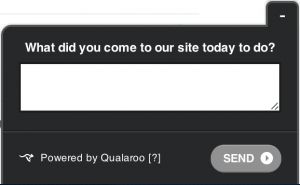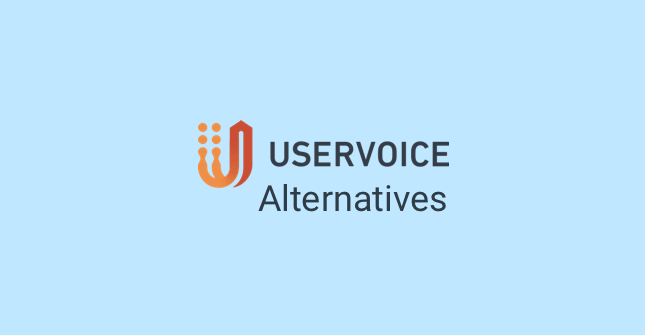Sean recently sat down with Darrell Benatar, CEO of UserTesting.com, to put together an hour-long webinar entitled “The Biggest Growth Opportunity is Right Under Your Nose.” In this post, he highlights some of the larger themes discussed, unpacks some of the concepts, and underscores the most significant points.
One big misconception about growth is that it’s all about getting more visitors to your website. Consequently, instead of truly addressing a low conversion rate, people simply focus on acquiring new sources of web traffic. But without making any changes to the user experience, visitors continue to bounce away, and the company’s growth remains unchanged. The real opportunity is in improving the performance of your existing traffic through conversion rate optimization.
Fortunately, many product managers and marketers responsible for their company’s websites understand the need to optimize the performance of the site they manage. But there’s a gap between understanding the need, and understanding the best way to go about it. That’s why too many optimization decisions are driven solely by analytics or opinion, instead of insights. And while analytics can tell you what is happening on your site, they can’t tell you why.
Without a deep understanding of the core issues hurting performance on a given page or user flow, A/B testing becomes nothing more than a hodgepodge of experiments that attempt–often in vain–to improve conversion rates with little rhyme or reason. This approach to testing can be frustrating, yielding little in the way of meaningful results, eating up valuable resources that could’ve been better spent, and hurting team morale. This downward spiral can lead teams to abandon conversion rate optimization altogether.
How to Use Conversion Rate Optimization as a Growth Driver
Luckily there is a better way—which we recommend in the webinar. It’s a conversion rate optimization process that’s driven by insights. It begins with two questions:
- What do visitors want?
- What’s stopping them from getting it?
Rather than testing random page elements, beginning with these questions sets you on the path to gaining insights that help you do more with the traffic you already have. That’s the growth opportunity right under your nose. It’s up to you to figure out what they want and what’s stopping them from getting it.
But how do you figure out what visitors want?
In the past, referring keywords did a great job of providing this insight. These keywords acted as a proxy to understanding visitor intent. However, Google has been steadily encrypting more and more of this data to the point that most of us have no idea which keywords the majority of people use to get to our sites.
Path analysis, or looking at the links that people click on to navigate through your website, can provide some supplementary information. For example, one of Qualaroo’s most popular pages is Qualaroo for E-commerce—which lets us know that a sizable portion of our users are coming to our site to solve ecommerce challenges.
Ultimately, however, there will always be gaps in the data, and so a smart alternative is to stop trying to answer these questions on your own and just ask users what they’re looking for. It’s amazing how much time we’ll spend poring over analytics reports when a short survey will give you more insights far more quickly.
How to Get Actionable Insights From Website Visitors
You have a couple of different methods for doing this. Many people use a follow-up email survey to ask something along the lines of, “What were you originally looking for?” and “Why?” It’s not a bad idea, but does have some major drawbacks:
- You can only ask those who actually convert—not those who dropped off due to frustration and confusion.
- You don’t get in the moment feedback. Visitors may forget what they were feeling or why they made a particular decision at the time.
The better option is to ask them while they’re actually on your website, which is what we do with Qualaroo. In the case of on site surveys, what you ask is determined by what you’re selling. Among other things, you might ask, “What did you come to our site to do today?” or “What problem would you like to solve with our product?”

These questions help you to hone in on what it is about your product that attracts them and the need they’re looking to fulfill.
Once you have a better understanding of that initial question—what visitors are coming to your website for—you can begin figuring out what’s preventing them from achieving it. Among other things, it could be that:
- You don’t have what they want.
- You do a bad job of communicating that you do have what they want.
- Something about your solution makes people nervous.
- Parts of your site are confusing.
- Your website is actually broken.
Identify What’s Getting in the Way of Your Visitors
But how do you really dig in to figure out what’s stopping conversions in your case? To begin with, analytics can tell you where people are dropping off. For example, if everyone adds an item to their shopping cart but very few actually check out, you know where you need to look for friction.
You also might try using an exit survey in places prone to visitor abandonment to ask people what’s preventing them from completing their objective. In this case, it’s smart to begin with a yes or no question, which requires less commitment from users on their way out, and then follow up with a free text option that lets you collect more detailed and interesting insight.
Another option is user testing, which can really help in figuring out why something is happening when analytics have already shown where it’s taking place. With user testing, you can observe real people using your site through video recorded sessions on your site. You’ll quickly hear what’s causing confusion, nervousness, skepticism, or frustration at certain points in your user experience.
UserTesting.com, for example, uses a panel of people who match your target audience or targets a percentage of visitors to your site with a moderated screen-sharing solution.
Do You Have the Right Kinds of Visitors?
Your data might indicate that you have a bigger issue—that you don’t actually have the right solution for your current visitors. In this case, all the optimizations in the world won’t help. It’s a need/solution fit issue, and for these users, your solution will never become must-have.
In that case you need to focus on improving the quality of people coming to your site, not the site itself. Reexamining your traffic sources can help you bring a larger percentage of qualified people to your site.
Building an Insight-Driven Optimization Plan
If your problems can be addressed with testing and optimization, it’s time to use the insight you’ve gathered to improve your site. Remember, it’s as simple as building desire while decreasing friction—you have to figure out what people want and what’s preventing them from getting it.
If you’re not sure exactly where to start, I recommend beginning with 10 simple tests tailored to your specific user feedback:
- 4 messaging tests to optimize the need/solution match
- 4 tests to address points of fear, confusion, or breakage
- 2 tests that front load your product’s “aha moments,” or the points at which users “get” the value of your product.
If some of these first 10 tests are clear wins, then keep focusing on those areas. Remember, you’re not researching for the sake of research. Instead, you’re looking for insight that will help you quickly determine what’s working and what isn’t, generate new ideas for testing, and ultimately improve your site’s performance.
To get started, take a look at your analytics and identify points of friction or drop-off. Give Qualaroo a try, free for 14 days, and deploy a survey to those pages, or add an exit survey to capture feedback from abandoning users. Use that feedback to run your first tests. Share wins and losses with your team to learn what does and doesn’t work with your visitors. Congratulations, you’re on your way to gaining real improvements in your website performance.
Have an insight-driven optimization that worked, or thoughts on how to put a conversion rate optimization plan in place? Share with us in the comments!
Want insights that improve experience & conversions?
Capture customer feedback to improve customer experience & grow conversions.





